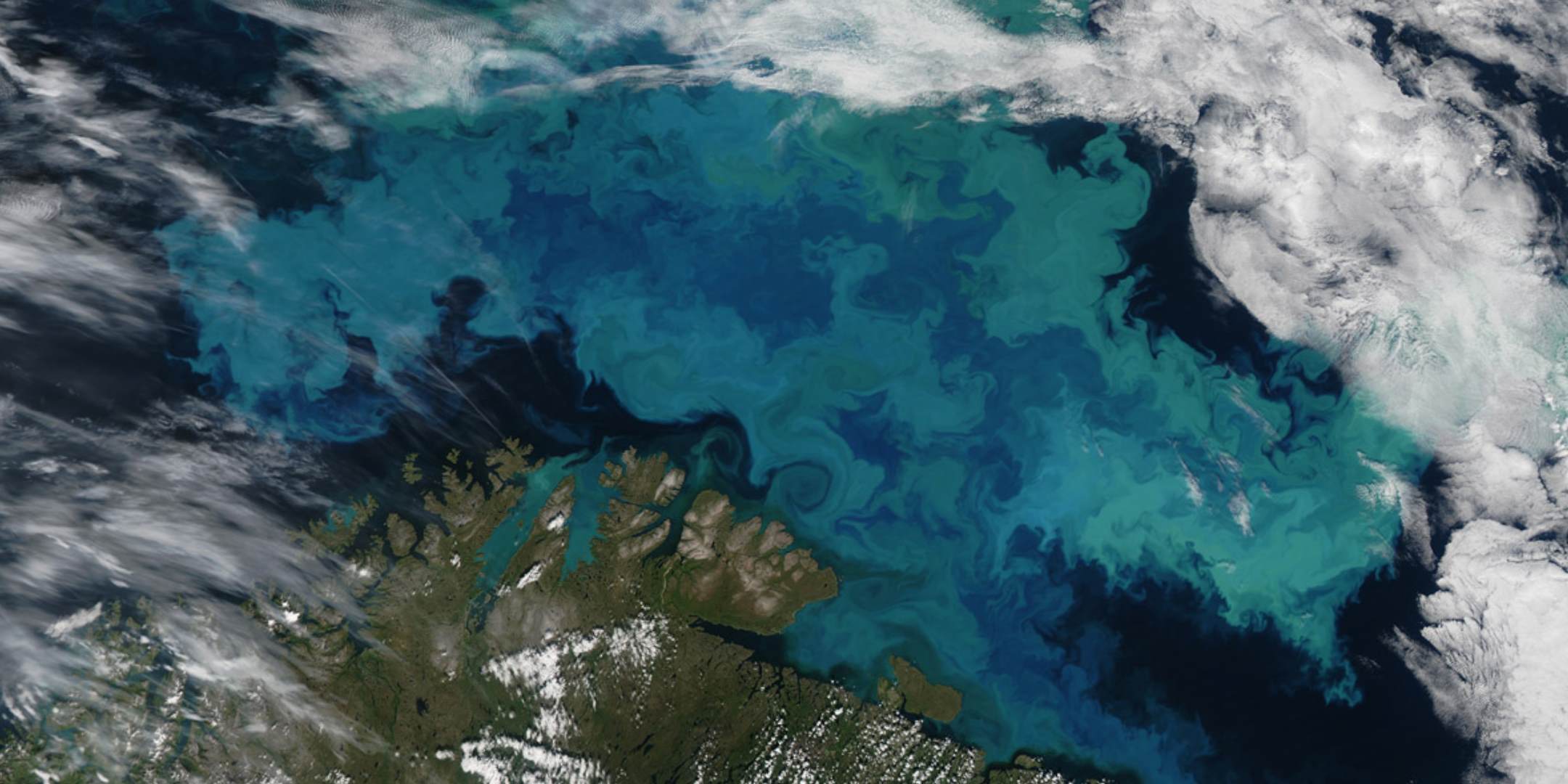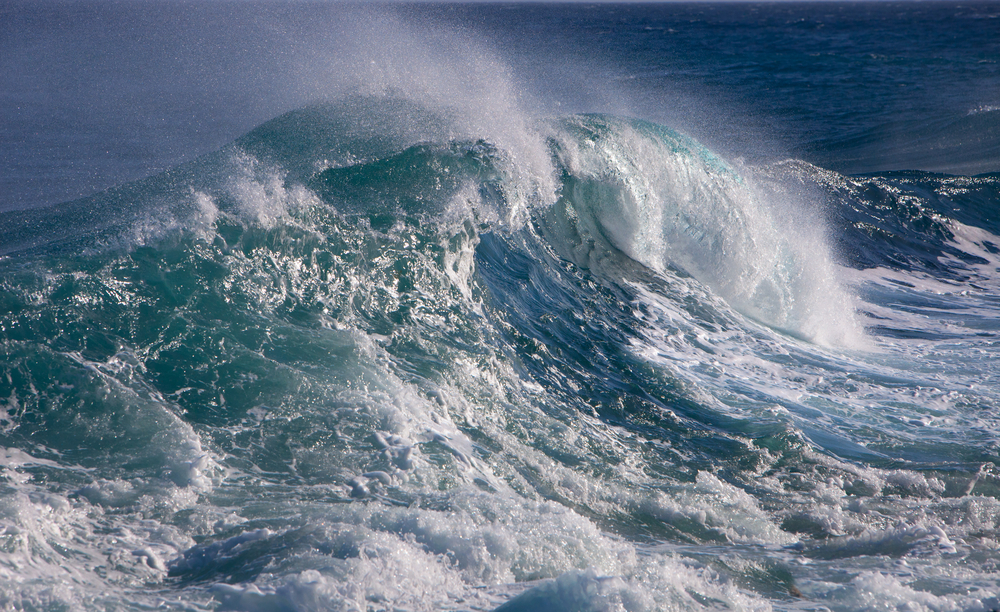
The ocean’s nutrient cycle
A whale carcass floats to the surface. The remains will eventually sink, taking their nutrients with them to the depths of the ocean. Image: HOLBOX/SHUTTERSTOCK
The key feature that distinguishes ocean ecosystems from their terrestrial counterparts is the role of gravity. On land, dead plants and animals tend to accumulate in the soil, held there by the power of gravity. The nutrients in these decaying organisms are returned to the medium from which they were extracted by the roots of growing plants. In the ocean, dead plants and animals sink and this tends to take their attendant nutrients away from the sunlit surface layer where the unicellular plants start the chain of life.
Plants can only grow in the surface 100 to 200 metres of the ocean; below this there is insufficient light for photosynthesis. But plants need nutrients as well as light, and these get used up by growing algae, as well as being incorporated into the bodies of the plants, animals and microbes. Because these are all heavier than water, when they die they tend to sink out of the sunlit layer. This means that with time the upper ocean becomes depleted in nutrients that are needed for plant growth. In summer the sun heats the surface ocean and this creates a layer of warmer water separated from the cold, deep ocean by a density barrier called the thermocline. The surface waters and the algae are mixed within this layer, but nutrients that sink below the thermocline are thought to be lost to the productive cycle for the rest of summer.
Brilliant shades of blue and green explode across the Barents Sea. The colour was created by a massive bloom of phytoplankton that are common in the area each August. NASA Earth Observatory/Wikimedia Commons
When dead organisms sink they are consumed by microbes and animals and the nutrients are converted into tissue, faeces, liquid wastes and respired gases. So the nutrients that are fixed by the plants at the surface are released again at depth by the actions of microbes and animals. There must be some way for these to reach the surface again so that production can begin again in spring.

Storms help to distribute nutrients through the oceans by churning them up into shallower waters.
Until very recently, it was thought that returning the essential nutrients to the surface waters was entirely a result of physical processes. In winter, storms disrupt the thermocline and mix the ocean much deeper, bringing up much of the dissolved material that was re-mineralised at depth during the summer. Additionally, the great ocean currents bring deep water to the surface in upwelling zones along the edges of continental shelves, resulting in highly productive ecosystems like those found off the coast of Peru.
Rivers discharge land-based nutrients into the ocean, helping to enrich it. This photograph shows sediment plume from the Mississippi River flowing into the ocean. NASA Earth Observatory/Wikimedia Commons
Rivers and glaciers also discharge land-based nutrients into the oceans, and winds blow dust into the water and onto sea ice that releases the nutrients when it melts in spring.
Melting glaciers and sea ice are another source of nutrients. DENIS BURDIN/SHUTTERSTOCK.
It is becoming apparent that these physical processes are augmented by the actions of animals. The greatest migrations on the planet occur in the ocean and every night there is a mass movement of animals—crustaceans, fish and squid—from deep water to the surface. These migrants create a massive amount of turbulence that helps to mix deeper nutrients back to the surface. They also bring with them parcels of water that contain high levels of nutrients, and they themselves are highly concentrated packages of chemicals, many of which are critical for plant life.
In many areas of the open ocean, plant life is limited because there is not enough iron in the water. Dissolved iron is present in minuscule amounts in seawater but it is essential for the photosynthetic process that allows plants to use sunlight to create new organic material. Animals, too, need iron—the deep red colour of vertebrate blood is evidence of this—and they have efficient mechanisms for stripping just enough of it from their plant or animal food so that their physiology can function effectively. The Southern Ocean is starved of iron because it has no input from rivers and little from dust because most of the land is covered by ice. So plant growth in the deep south is kept in check by an shortage of iron.
Paradoxically, it appears that whales and krill play a critical role in maintaining a steady supply of iron to the algae in summer. Krill—the main food of baleen whales such as blue, fin and humpbacks—contain high levels of iron and the huge population of krill around the Antarctic may contain up to a quarter of the iron in the surface layer. Because krill swim, they can keep this iron up near the surface, and it appears that they can also visit the seafloor where they can feed on iron-rich material that they then return to the surface. In spring, when the whales return to Antarctic waters, they feast on krill (a blue whale can eat two tonnes of krill a day) and they release plumes of iron-rich faeces into the water just when and where the algae need it most.
Bryde's whale feeding on krill. NERAMIT SISA/SHUTTERSTOCK
This recycling of iron by krill and whales leads to the counter-intuitive conclusion that the more whales there are, the more algae there will be—and this in turn leads to more krill, which thrive on the algae. This positive feedback loop has been broken in most of the world’s ecosystems because the whales have been removed, and it has been suggested that this is linked to reduced algal production and smaller krill populations. It seems odd, but allowing the recovery of the great whales may actually result in a larger krill population. Sperm whales—which feed at great depths on squid and fish containing iron originally sourced from the surface—can return the iron when they defecate in the upper ocean, and thus play an important role in recycling this vital element.
But iron is not the only element whose abundance whales influence. In many coastal waters nitrogen is scarce, particularly in late summer, and whales can play a major role in bringing nitrogen up from deep water by feeding on deep-living animals and excreting urea at the surface. Everywhere we look we see that these large animals have a positive effect on ecosystem productivity rather than merely being consumers of animal biomass.
